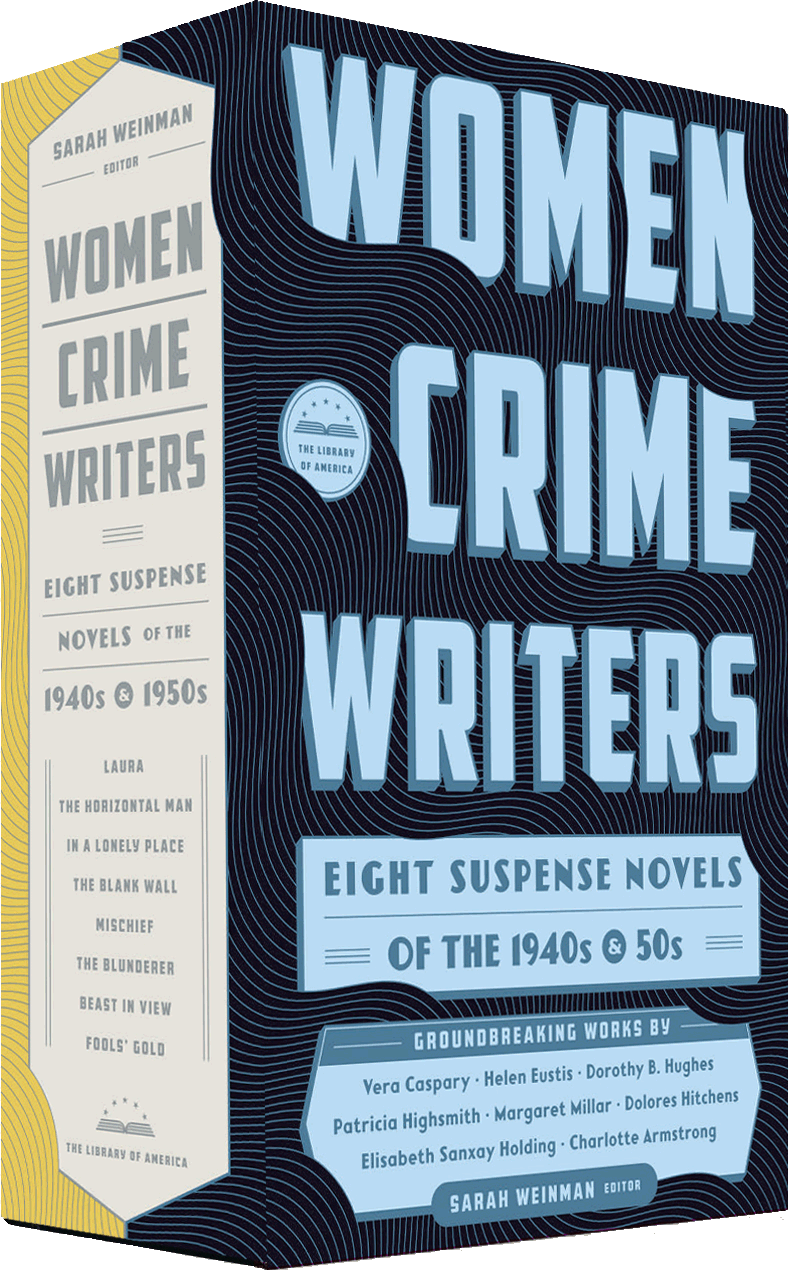The Gimlet Eye of Dorothy B. Hughes
Megan Abbott on Dorothy B. Hughes’s In a Lonely Place

Megan Abbott
While not the first serial killer tale, Dorothy B. Hughes’s In a Lonely Place (1947) set up a template for hundreds to come, anticipating even Jim Thompson’s The Killer Inside Me (1952) by bringing the reader inside the killer’s fevered head. But, unlike Thompson and many later writers, Hughes directs her gaze inward only to then direct our gaze outward. She has in mind something larger—about the nature of sex crimes, but also about the complicated, freighted environment of America just after World War II. In fact, if you wanted one book to tell you about the consuming gender trouble and sexual paranoia of that moment, you could do no better than Hughes’s too long neglected masterpiece.
Hughes signals her intent from the start, naming her killer with a knowing wink: Dix Steele. A World War II vet, Dix served as a fighter pilot, the most glamorous of military occupations. But with the war over, he is aimless and jobless in Los Angeles, living well for the time being only on questionable family funds and a skill at the hustle. The glory days of the war are gone, and Dix has “found nothing yet to take the place of flying wild.” To avenge this crushing loss, he satisfies himself by preying on the youngest and most innocent of girls, at bus stops, on darkened streets, alone in the loneliest of places.
While Dix is a stalker of prey, a “penetrator” of women, his greatest fear is being watched, “seen through” and fatally understood by penetrating women. And Hughes offers us two very smart women: Laurel, the beautiful neighbor with whom Dix imagines he’s in love, and Sylvia, the wife of Dix’s Air Force buddy, Brub, now a LAPD detective whose investigatory skills pale alongside those of his wife. In another noir novel, Laurel and Sylvia might be presented as femme fatales, seeking to entice and entrap Dix. But in Hughes’s hands, they are neither vixens nor passive victims. They are dual investigators, and at least as powerful as Dix fears. They see through him, see him for what he is. The more penetrating their gaze, the more hysterical he becomes. And to Dix, nothing could be more threatening, or more emasculating.
These dynamics speak volumes about In a Lonely Place’s cultural context—an era of gender realignment and perceived masculinity under siege. What we see in Dix’s tale is a cunning, prescient analysis of post-war sexual panic still underway as Hughes was writing. This was the time, and place, of the Black Dahlia Murder, which tore the roof off a Los Angeles thick with sexual violence, missing women, unsolved crimes, and general mayhem.
The pervasive—and ultimately convincing—theory of 1940s noir links it to the return of soldiers to a changed America. Gone are the economic opportunity, the glory, the innocence of their own youth. And, perhaps most of all, their women. Out of the kitchen and into the workforce. Potentially into their jobs. And who knew what else they had been up to while he was gone? Whom they had let in their bedrooms? The result was a dark current of books and films depicting men alone facing a world over which they have no control, and in which the greatest threat is emasculation at the hands of the woman, the femme fatale. The noir hero risks becoming the patsy or the sap or worse. To counter the danger, he must either (like traditional hardboiled heroes Philip Marlowe and Sam Spade) contain the female threat, or reassert his power with a vengeance, like Mickey Spillane’s detective Mike Hammer, also a WWII vet, who boasts of the ease with which he kills treacherous women. The workings of Hammer’s fevered mind are close to that of Dix Steele or countless other serial killer protagonists. Witness Hammer sitting on his sofa, “dreaming of the things I’d like to do and how maybe if nobody was there to see me I’d do anyway.” He tells us he won’t stop until he is “splashing [his enemies’] guts around the room,” until he has them “in the dirty end of a stick.” He dreams of “fresh corpses.” Spillane makes Hammer a superhero, Hughes makes Steele a hysterical killer. Which is which?
After reading In a Lonely Place, you find yourself looking, with a newly gimlet eye, at every purported femme fatale, every claim of female malignancy and the burning need of noir heroes to snuff that malignancy out. The stunning film version of In a Lonely Place, starring Humphrey Bogart and Gloria Grahame, unfolds quite differently. Director Nicholas Ray can’t resist putting a luminous romantic sheen on Dix and Laurel’s doomed romance with his Dix (in Ray’s version not a murderer, only a potential one) serving as a tortured anti-hero. In Hughes’s novel, however, there is not a drop of romanticism, not a touch of fantasy. It is a dark, cold gem of a book, a gem without a flicker of heat or light. One that cuts to the touch.
Extras
Amazon’s Dorothy B. Hughes Page
“Murder Culture: Adventures in 1940s Suspense” by David Bordwell
On Hughes’s novel The Expendable Man (1963):
- “The Crime of Blackness: Dorothy B. Hughes’s Forgotten Noir” by Christine Smallwood at The New Yorker
-
“Uninvisible: On Dorothy B. Hughes” by Charles Taylor at The Nation
(Subscription required)
On Nicholas Ray’s 1950 film of In a Lonely Place, starring Humphrey Bogart:
- “The Heart is a ‘Lonely’ Hunter: On Nicholas Ray’s In a Lonely Place” by Serena Bramble, at Senses of Cinema
- “‘I Like His Face’: Nicholas Ray’s Noir Classic Restored on DVD” by Scott Thill at Bright Lights Film Journal
- Roger Ebert’s review of In a Lonely Place
Film trailer for In a Lonely Place (1950), starring Humphrey Bogart


 Sarah Weinman is widely recognized as a leading authority on crime fiction. She is the editor of Troubled Daughters, Twisted Wives: Stories from the Trailblazers of Domestic Suspense, which the Los Angeles Review of Books called “simply one of the most significant anthologies of crime fiction, ever.” She is the news editor for Publishers Marketplace, and her work has appeared in The New York Times, The Wall Street Journal, the National Post, and The Washington Post, among other publications.
Sarah Weinman is widely recognized as a leading authority on crime fiction. She is the editor of Troubled Daughters, Twisted Wives: Stories from the Trailblazers of Domestic Suspense, which the Los Angeles Review of Books called “simply one of the most significant anthologies of crime fiction, ever.” She is the news editor for Publishers Marketplace, and her work has appeared in The New York Times, The Wall Street Journal, the National Post, and The Washington Post, among other publications.